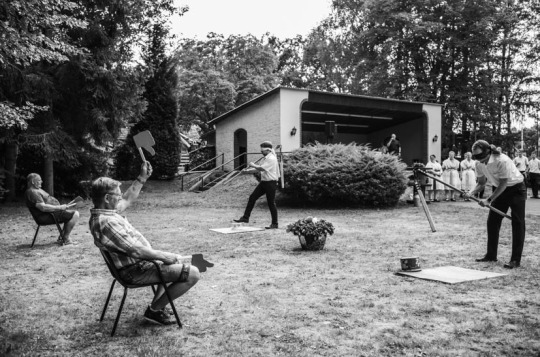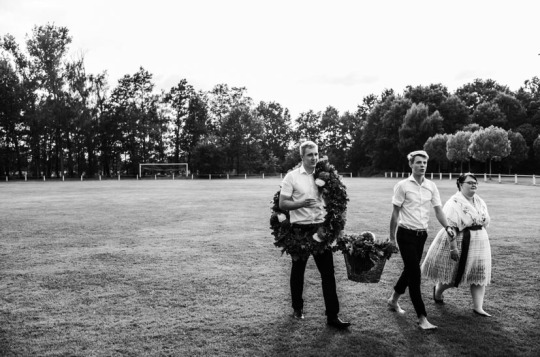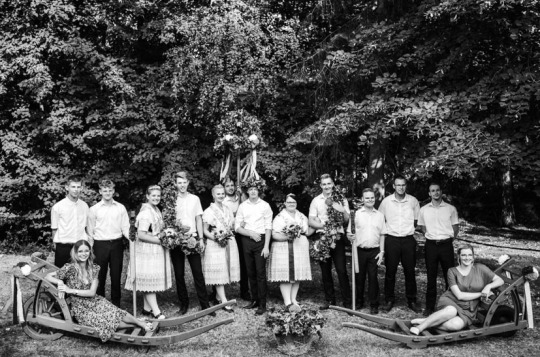Text
Please reblog for a bigger sample size!
If you have any fun fact about Ohio, please tell us and I'll reblog it!
Be respectful in your comments. You can criticize a government without offending its people.
Info: Lusatia is not a country. The blog is open to non-country polls now. In this case, it refers to a region in Germany and Poland.
29 notes
·
View notes
Text

‘Aktivist’
Digital Collage, 375 x 375 mm, 2023
Fine Art Pigment Print under Acrylic Glass,
Black Aluminium Art Box
‘Activist’ is probably the most totalitarian-seeming image in the series so far. The composition consists only of visual set pieces of the socialist hero glorification in the mining industry and the German miners' song 'Vor dem Anfahren' from the Mansfelder Land from 1797. I tried to reduce the aggressive expression - not particularly successfully. Until I realized that the elements such as: danger of being buried, community, omnipresent death, uniforms, and (the built-up) ideal of serving the people are inherent in the theme and I have to accept this in order to complete the picture.
Mining is war against Earth - our home planet.
I have to admit that I have had little contact with the mining culture so far. But since the beginning of the 1990s at the latest, it has been clear that mining in Germany is a phased-out model - an industry with no future due to dwindling resources, high environmental pollution and the health consequences for employees. But politicians in eastern Germany in particular cling to the myth that fossil resources never run out - also because they have failed to develop sustainable alternatives and perspectives. Mining has caused irreparable damage to the landscape and has irrevocably destroyed autochthonous culture, especially in the opencast mining areas of East Germany. Mining companies criminally mislead the public when it comes to water extraction from ecosystems.
Ultimately, the glorification of fossil fuel industries can no longer be justified. This is not to deny the achievements, hardships and sacrifices made by miners and their families for centuries. The picture is dedicated to them.
2 notes
·
View notes
Text



'Decolonize Sorbian Settlement Area;
Digital Collage, 375 x 375 mm, 2024
Fine Art Pigment Print under Acrylic Glass,
Black Aluminium Art Box
Lets talk about decolonization of the sorbian settlement area. My recent project of artistic research.
7 notes
·
View notes
Text

Young people of Proschim/Prožym, 1943, by Karl Doman
2 notes
·
View notes
Photo
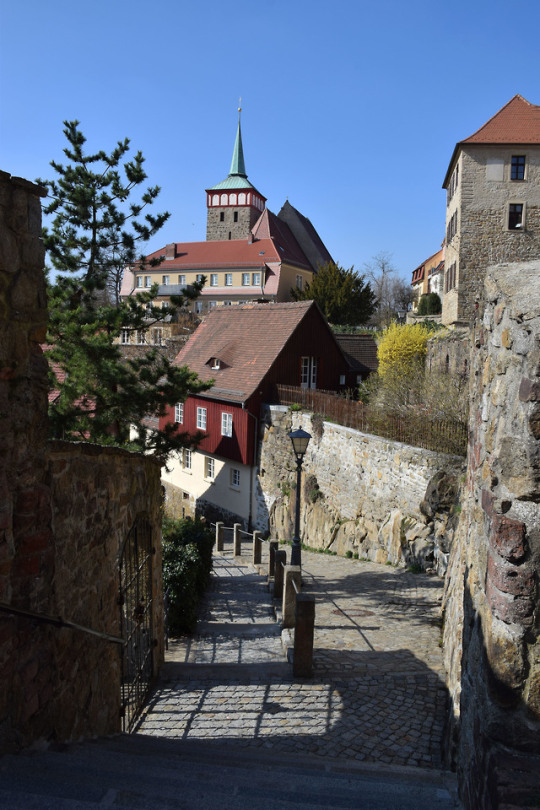
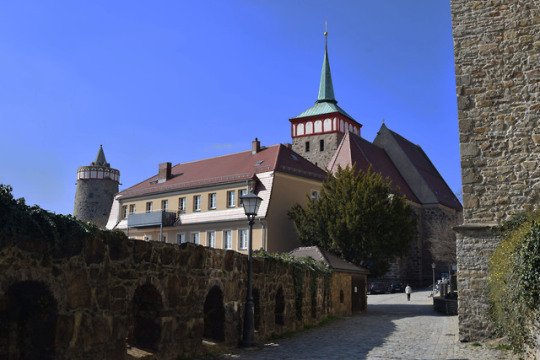

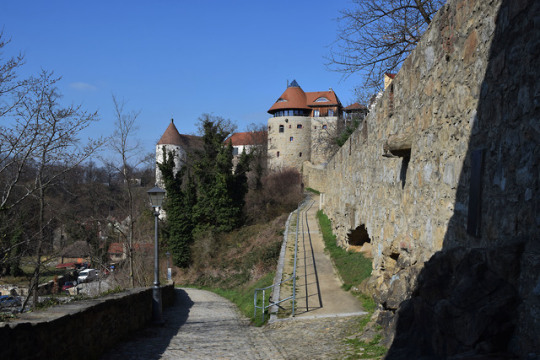
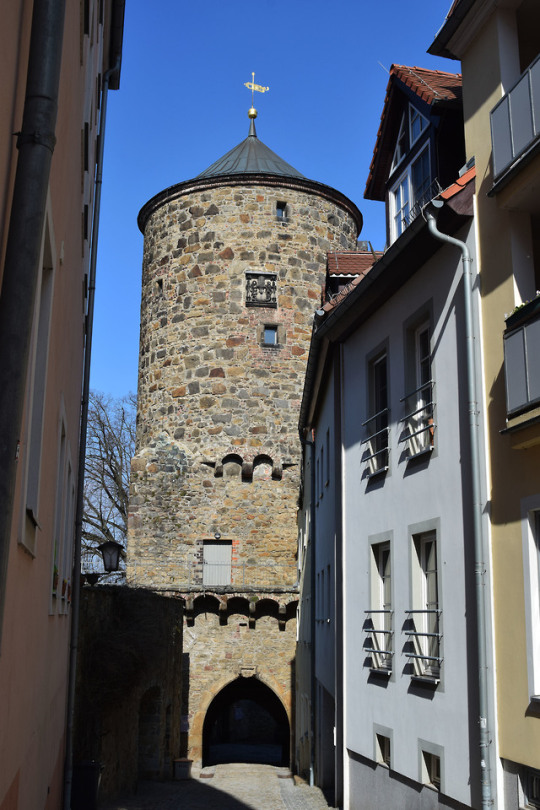



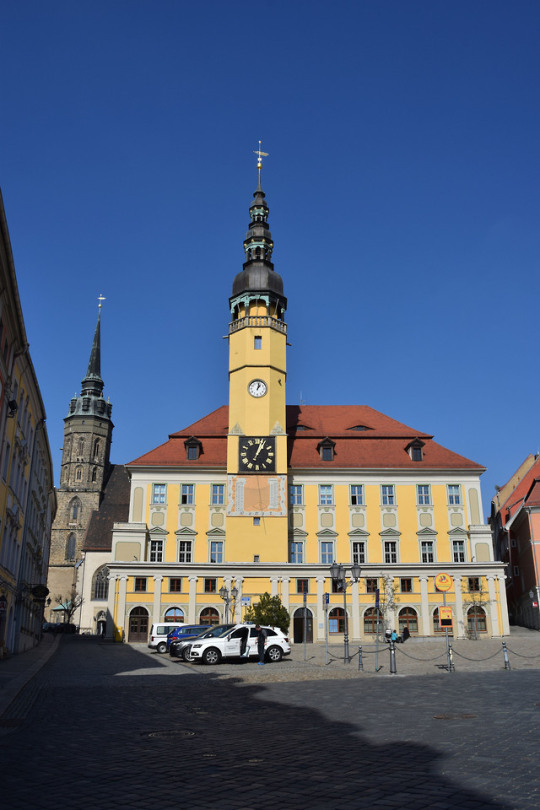
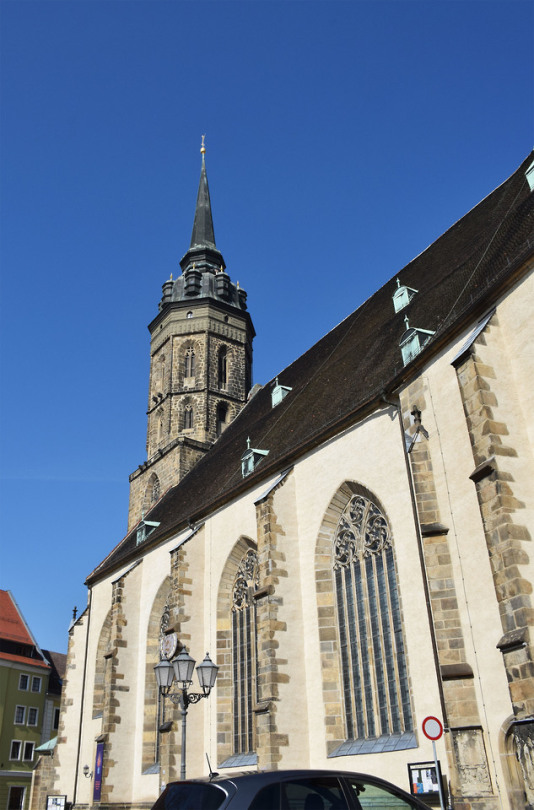
Bautzen, Germany
This colourful town was traditionally inhabited by the Sorbs, a Slavic people, and though they have declined in numbers, many still live in this region (as well as the Spreewald region to the North) and keep traditional customs alive. There is a Sorbian museum you can visit if you want to know more about them (which is the reason why we stopped by), but overall they have also contributed to the slightly unusual appearance of the town architecture.
192 notes
·
View notes
Text
The jewish-catholic sorbian woman
A quick biography for the Holocaust remembrance day.

Annemarie Kreidl was born into a jewish family on the 15th August 1918, as the illegitimate daughter of Gertrude Kreidl, an underage girl, with no father to be found. Gertrude fled from Dresden to Horka/Hórki to give birth, and Annemarie was given into the care of the sorbian family of Maria Šěrcec and her sibling, and later got adopted by them in 1925.
From now on, the village of Horka/Hórki called her Hana and she was raised as a Catholic sorb - and yet she chose Esther as her church name in 1934, a name forbidden for non-jewish German women by the nazi regime.
It is unclear how the society found out about her jewish heritage, but she had to regularly visit the Gestapo in Dresden from 1941. Her adoptive father protected her, although he was a part of the NSDAP, and the village semi-tolerated her existence, more as a Sorb than as a jewish woman. In June 1943, she got a deportation notice and had to go to Dresden - and was never heard again.
Jurij Koch (*1936) published "Hana" in 1963 on upper sorbian, where he tried to reconstruct her biography. In 2014, a Stolperstein / memorial stone was laid, written in the upper sorbian language and placed in front of her birthplace.
During the nazi regime, the Nazis first thought they could get the support of the Sorbs, but these efforts quickly died and the main goal changed into assimilating Serbja and completely erasing the culture. Cultural activities were forbidden, it was not allowed to speak sorbian anywhere outside the private home, sorbian books where burned, sorbian schools became German and sorbian families were forced to send their kids to these germanized schools, the flag and the national anthem were prohibited, sorbian town and river names were changed into German, and any kind of sorbian organization became illegal. Sorbian preachers, teachers, journalists and activists were either deported into the west or sent to prison camps. Sorbs were entirely labeled as "Wendish speaking Germans" and "biologically inferior".
5 notes
·
View notes
Text
German journalists every year two weeks before Easter, remembering that Sorbs exist

#German stuff#Germanblr#Deutschblr#deutsches zeug#Germany#file: memes#Sorbian#Wendish#Easter#Sorbs#Lusatia#Łužica
7 notes
·
View notes
Text
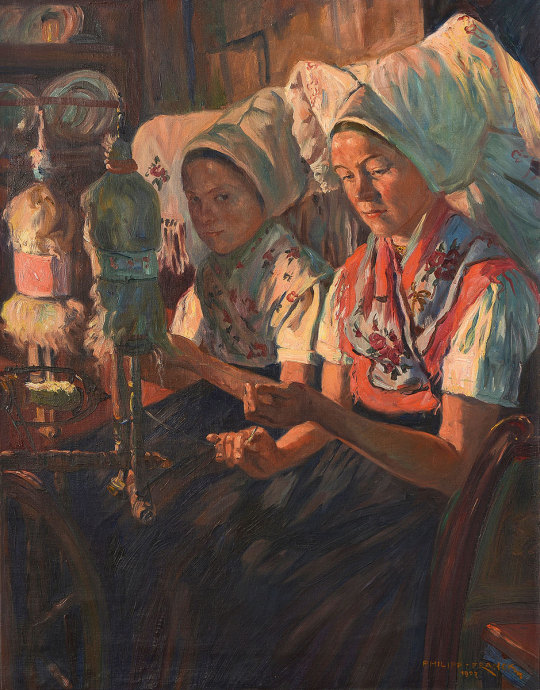
Philipp Franck (1860-1944): Spreewälderinnen beim Spinnen (1907), oil on canvas.
#file: culture#Folk costume#Art#classic art#Painting#oil on canvas#Spree forest#Błota#Lusatia#Łužica#West slavic#Slavic#Slavic folk costume#Sorbian#Wendish#Serby#Serbja#20th century#Philipp Franck
22 notes
·
View notes
Text
Hej! Germany's coal exit of 2038 may sounds too soon to some people, but did you know that the Lignite opencast mining of Łužica removed over 130 historical sorbian villages in the past 70 years, resettles (sorbian) inhabitants way before someone even has a legal permission to mine on the ground, polluted the water, pollutes the rivers with Iron hydroxide and sulfate, creates lakes out of the mines on top of former villages for tourism purposes, while some of them are unusable (even deadly) or contaminated with heavy metals, and additionally leaves areas/ forests you can't walk through because the breaking/sinking grounds killed people?
And hej, did you know that the LEAG (Lusatian Energy and Mining Public company) keeps documents about the water in secret and makes it impossible to sue the company over house damages and water pollution, holds the power over Łužica's water, makes empty promises about repurposed mines, uses more ground water than allowed and pays hush money?
27 notes
·
View notes
Text
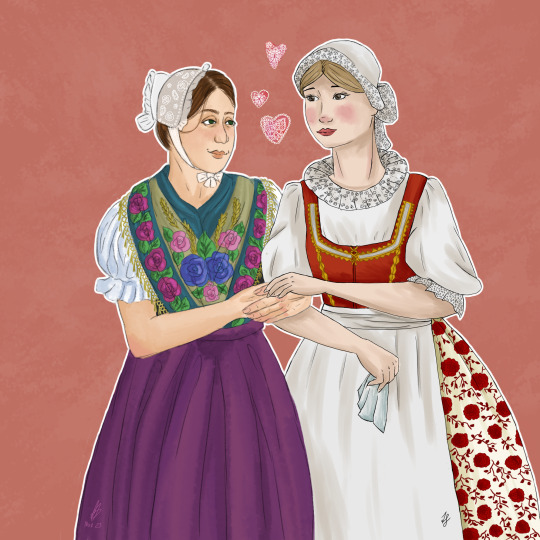
Celebrating the Czech-Sorbian solidarity, @sisi-the-undead and me drew these women in the folk clothes of central Bohemia/ the Berounsko region and the Bautzen/Budyšin region. <333
41 notes
·
View notes
Text

'Coat Of Arms'
The city coat of arms of 'Bautzen/Бауцен' with its heraldic coloring blue/yellow and its iconic town wall with additional 'Україна/Ukraine' lettering.
Shortly after Russias invasion into Ukraine some right wing citizens of Bautzen destroyed and removed blue/yellow flags in the city. BUT the coat of arms colors of Bautzen and Upper Lusatia are blue and yellow.
9 notes
·
View notes
Text
I don't know if German newspapers realize that, but we can tell if you've actually done some research on Sorbian topics before writing your news article. Bonus points if you annually - mysteriously two weeks before Easter - remembered that there are other people next to neo Nazis living in Lusatia.
But thank you for giving us the basic copy pasted short definition of who the Sorbs are, when they came to Germany and how many there are today, for the introduction, while using weird headlines and mismatching photos for the rest of the article.
#Germany#deutschblr#german stuff#Germanblr#Sometimes they be like: talking abt upper Sorbs and putting in a picture of wendish spree forest women. Or vice versa#Lusatia#file: unspecified#Rjana Łužica#Lausitz#Sorbian
3 notes
·
View notes
Photo
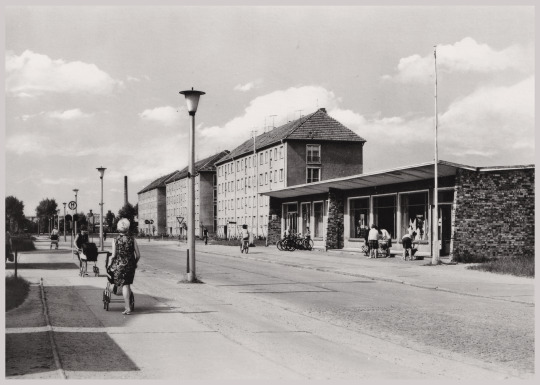
Ansichtskarte
Vetschau (Spreewald) - Juri-Gagarin-Straße
Wětošow (Błota) - Jurja Gagarinowa
VEB BILD UND HEIMAT REICHENBACH (VOGTL), 1969
Foto: Bild und Heimat ([Heribert] Darr)
15 notes
·
View notes
Text
On this day...

On this Day, the 20th October 2023, exactly 100 years ago, Otfried Preußler was born as Otfried Syrowatka in Czechia.
Preußler was an infamous author for German children's literature, with protagonists all taking up the role of outsiders. He is especially well known for his Krabat retelling of the sorbian folk tale, which is his own literary confrontation with the national-socialism.
9 notes
·
View notes
Text
Today in history: The 13th October 1912 - Domowina was founded for the first time.
»[…] Die fremdsprachigen Volksteile des Reiches dürfen durch die Gesetzgebung und Verwaltung nicht in ihrer freien volkstümlichen Entwicklung, Besonders nicht im Gebrauch ihrer Muttersprache beim Unterricht, sowie bei der inneren Verwaltung und der Rechtspflege beeinträchtigt werden.«
Was written in the Weimar Constitution. On english:
»[...] The foreign speaking ethnic groups of the Reich/ country should not be impaired by legislation and administration in their free development, especially not in the use of their mother tongue in teaching, as well as in internal administration and the administration of justice.«
"Does that mean the Sorbs were allowed to manage themselves with the allowance of using Sorbian, for example in official documents?", you may ask - technically! The Weimar Constitution used to be a progressive one for its time, but the people who made this possible were Domowina.
Domowina was founded on the 13th October 1912 in Hoyerswerda/ Wojerecy, by 60 representatives of 31 small sorbian organizations, to unite them and the sorbian people (divided by language, christian belief, and states) through one umbrella organisation. It was re-established after the first world war, and re-established a second time on the 10th may 1945, and fought for sorbian rights and the promotion of sorbian projects.
0 notes


